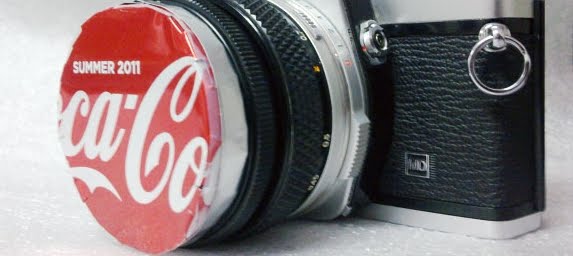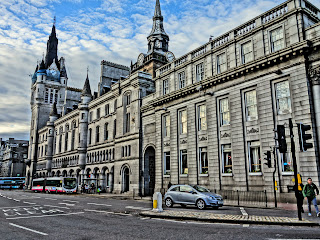Wednesday, June 4, 2014
Brightcove... why would you pay 99/month for youtube?
What is brightcove?
Wednesday, December 4, 2013
Words of Wisdom.
The budget for 'Transformers' could have put 3 million kids in Tanzania through a year of secondary education.
Sunday, December 1, 2013
Sony RX100 Field test
So not long after I declared my temporary war on digital SLRs I had a chance to lay my hands on a relatively decent compact camera: Sony RX100.
Since the camera has been out for some year and a half now, I'll skip the technical details as there are some detailed reviews out there. What I was interested in the most was to see how the camera performs without processing photographs externally, the results are quite spectacular, see below:
Built in processing ('toy camera') filters
High tonal range from intelligent HDR
HDR effect - although this is the most dramatic version, middle and low are also applicable
Comparison between a single image and extended tonal range above
The built in panorama mode processes images in less than 30 seconds and 3 out of 5 times my panoramas were correct despite rather dynamic image in front of me (if you zoom in close enough you will see some mild discrepancies but if used for landscapes I am sure this will not be visible).
Compared with processing several 20mb RAW images in Photoshop - pretty good I might say.
Good tonal range (note how the details in the black areas are still visible
Another HDR examples. Although the statue looks like badly overdone Photoshop , I am more than happy with the Marischal college building (this was done using the medium-detailed hdr instead of high).
The image below is an example of the built in filter which attempts to mimic the tilt-shift effect. Far off from the real thing but a good alternative for everyone fond off the Instagram filters.
So picking up where I left previously: this camera would not stand a chance in replacing a dSLR in studio environment, but it's more than capable of producing decent images on the go: no need for Photoshop.
The current price is somewhere around £350 which might be a little expensive for compact camera but still nowhere close to getting a decent lens with good focal length for a DSLR. More tests to follow.
Since the camera has been out for some year and a half now, I'll skip the technical details as there are some detailed reviews out there. What I was interested in the most was to see how the camera performs without processing photographs externally, the results are quite spectacular, see below:
Built in processing ('toy camera') filters
High tonal range from intelligent HDR
HDR effect - although this is the most dramatic version, middle and low are also applicable
Comparison between a single image and extended tonal range above
The built in panorama mode processes images in less than 30 seconds and 3 out of 5 times my panoramas were correct despite rather dynamic image in front of me (if you zoom in close enough you will see some mild discrepancies but if used for landscapes I am sure this will not be visible).
Compared with processing several 20mb RAW images in Photoshop - pretty good I might say.
Good tonal range (note how the details in the black areas are still visible
Another HDR examples. Although the statue looks like badly overdone Photoshop , I am more than happy with the Marischal college building (this was done using the medium-detailed hdr instead of high).
The image below is an example of the built in filter which attempts to mimic the tilt-shift effect. Far off from the real thing but a good alternative for everyone fond off the Instagram filters.
So picking up where I left previously: this camera would not stand a chance in replacing a dSLR in studio environment, but it's more than capable of producing decent images on the go: no need for Photoshop.
The current price is somewhere around £350 which might be a little expensive for compact camera but still nowhere close to getting a decent lens with good focal length for a DSLR. More tests to follow.
Labels:
comparison,
field test,
mirrorless,
no dslr,
photography,
review,
rx,
sony,
Sony rx 100
Saturday, November 30, 2013
Dslrs compromised - why I am switching to mirrorless
So I just came back from a marvelous 2-week work party trip to Tanzania.
A 10-people team from Wood Group headed to a lively town of Moshi to help Vine Trust assist local charities in raising houses for the most vulnerable in the Tanzanian community.
As notable and glorious the cause was, my task was to produce bucket-loads of media which would be used in a 5-year long campaign to follow. I was assigned both the role of a photographer and a one-man-band film crew (with my colleague swinging the shotgun mic for the interviews).
The trip was a huge success and I managed to bring back some awesome photos like the ones below, but it's not about them today.
Can you justify carrying a dslr to get them? I suppose you could.
Can you justify carrying two peli-cases full of gear, taking roughly a minute to swap to a different focal length, wipe the glass, wipe the mirror, take the dust off, take the lens cap off, take the rear cap back in, check if aperture jumped back-up or if it's still on f5.6 from the previous lens? Can you, for 13 consecutive days?
I think I had my breaking point during the safari trip.
We went for a 6-hour drive to the Ngorongoro crater so that we would never have to visit a Zoo ever again.
I tried to stick to the setup of 60D with 70-200mm f2.8. I gave my colleague in another jeep the 1d Mark III with 28-135 as she is still entering the world of manual photography, to avoid her having to change lenses.
So much like above, I managed to get some good snaps, however I was surrounded by people who have compacts for the sake of it and whose daily experience with photography is limited to selfies during a night-out; guess what? They still managed to get closer than I did.
My effective focal length of 300mm and gear with total value of roughly £1900 was beaten by cameras the size of a credit card.
Yup. Middle-range compacts got roughly twice as close as I did with my telephoto lens, their images were not shaky as the weather was brilliant so all cameras had as much light as they needed. Even their colours were more vibrant.
My first thought was: why is this happening?!
Now, don't get me wrong. I like my dslrs. I love my 5d mark II and the unbelievable depth of field it brings to the table but I wonder: why do we do all this?
Why do we invest ten-folds of what the amateurs spend on their cameras to get 8 out of 10 times an overall similar image? I get it, I know that I can print my images to the size of the building and still expect to see some quality in them, I also know that I can beat these toy-cameras after the dusk.
But how many times does one actually take the full advantage of the sizing? It does not really matter how big the resolution of the original file is as I'm pretty sure some 90% of these are scaled down to 1200x800 and live happily ever after on social media websites. Nobody prints their photos anymore. What if they have to? Well, this for example.
Speak of printing, after my mental breakdown and return from Africa my first destination was a Jessops store. After I shared my concerns with a customer assistant, she showed me her images she took with some 200-pound Sony compact camera. It was a Depeche mode gig, so not much of light other than the scene, yet the images are super-sharp, they were untouched, about 9 out of 10 were not blurry.
You would not tell they were not from a dslr.
Yeah, my 5d probably beats your camera hands-down in low-light. Oh wait, your point and shoot has a built-in flash? Now that's unfair...
I get how it's all about how much you want to get from your images; but at what cost? For my 5d, I still had to have a set of separate lenses and I should own a flash-gun by now. The price tag of the speedlite is equal to a very decent compact camera. On top of all that, your images are not good in the first place. Since as a pro, you most likely do flat video or low-contrast images to have the biggest capabilities in the post-production, they do not really look that great. In most cases it's just a case of punching the footage up in Lightroom, but it does add up. So is it really worth all the investment?
do you really want to carry that everywhere?
Yuk. Well, I might have over-exaggerated a little bit.
To sum up though, I think even being a skilled photographer and owning a dslr, you should not underestimate the power of some of the compacts. I have not had a chance to do full research yet, but one thing I'm sure off - instead of buying yet another bulky lens, I want to give it a try an invest something into a compact camera for a change and see where it takes me. In a controlled environment or if I really want to squeeze out every last bit of quality out of the situation, I would still moan but drag my 5d set, but I kind of long for the possibility of casual shooting. Even as a photographer you do not want to drag your job with you everywhere. Have a break, have a compact.
More thoughts to follow, hopefully some hands on reviews as well.
Wednesday, October 30, 2013
Tuesday, October 22, 2013
Chicks with Rocket Launchers
Drawing again!
After a short break I'm back to redoing the old characters. About all of them done now
After a short break I'm back to redoing the old characters. About all of them done now
Subscribe to:
Comments (Atom)

















